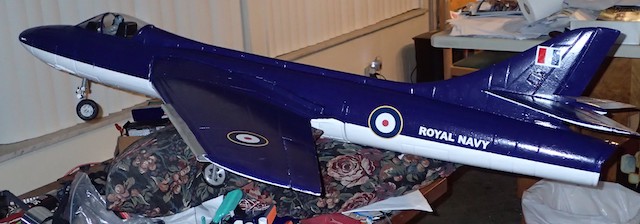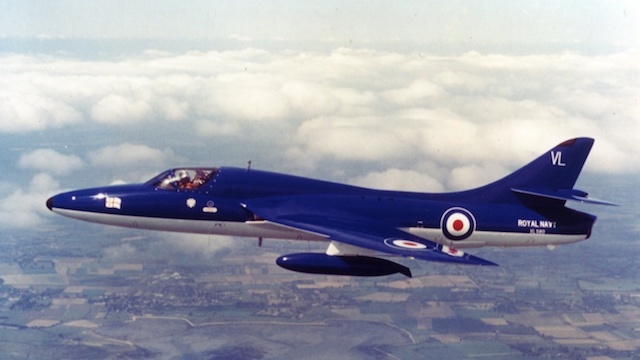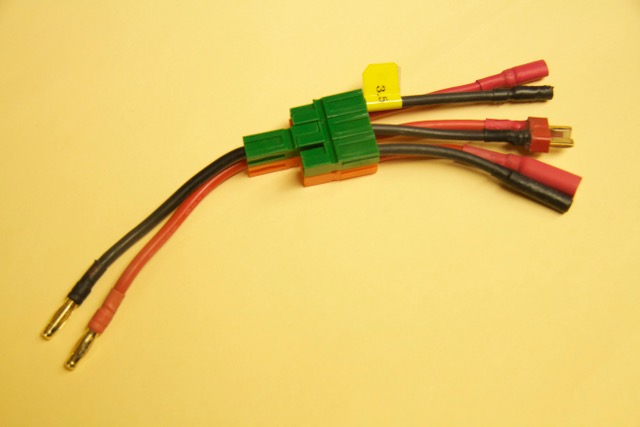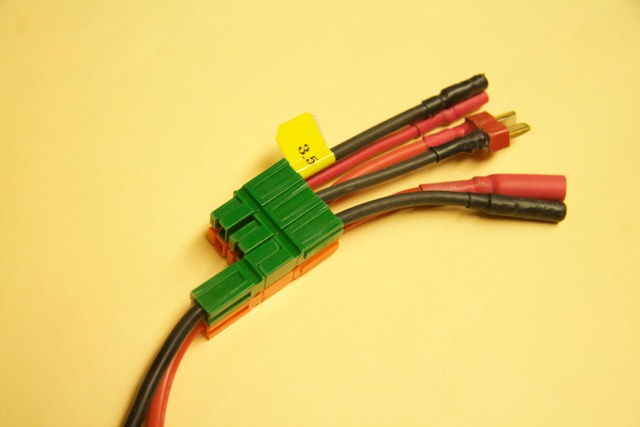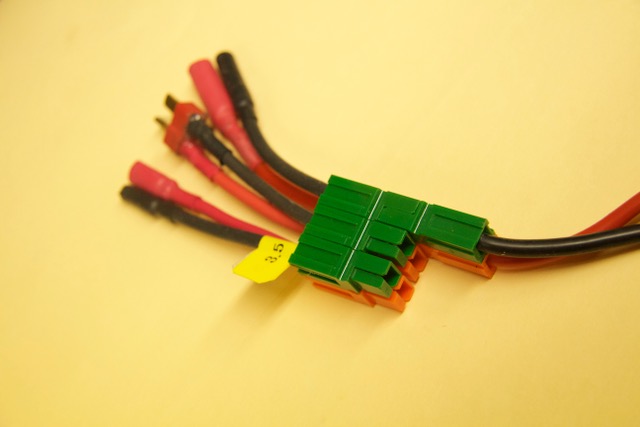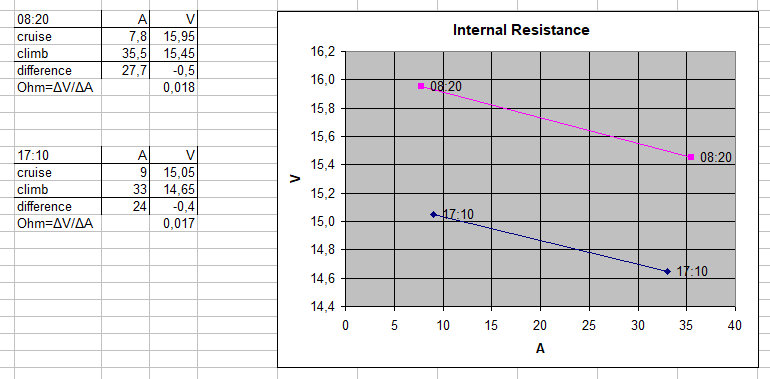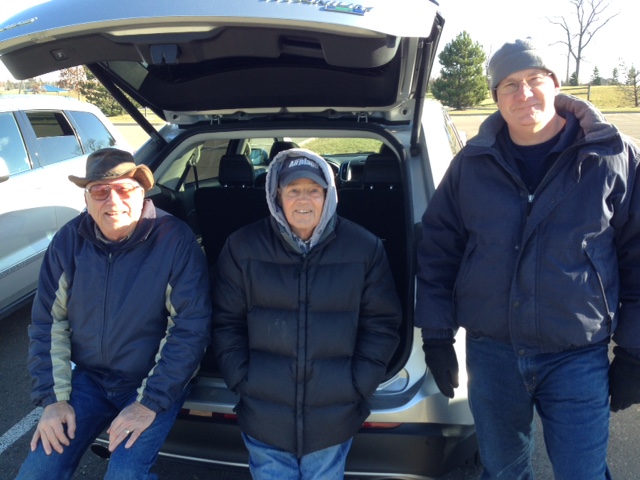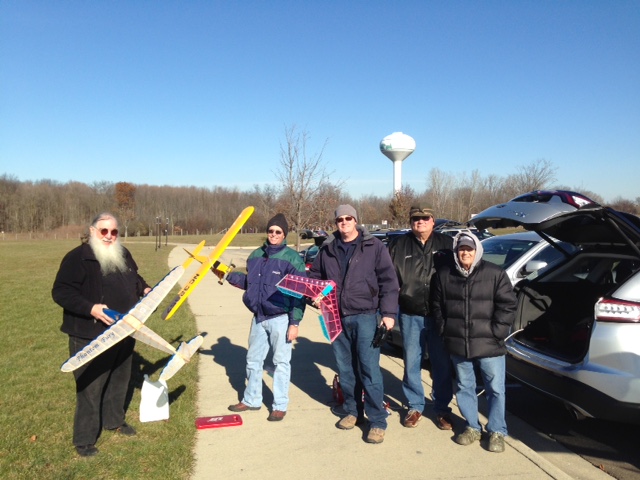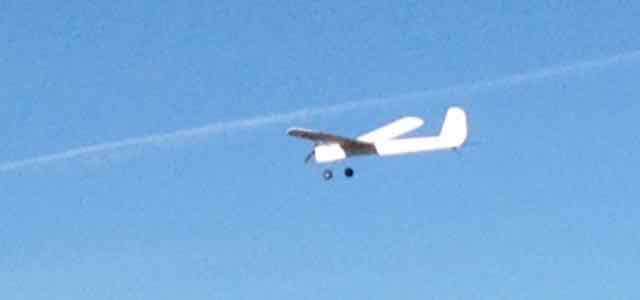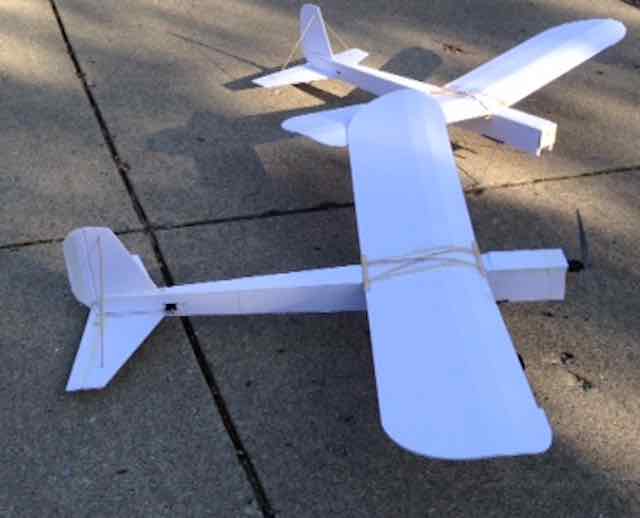 |
Flying High With Electric Power!
The Ampeer ON-LINE!
Fly the Future - Fly Electric! |
|---|
Site Table of Contents
| President: | Vice-President: | Secretary-Treasurer: |
| Ken Myers | Richard Utkan | Rick Sawicki |
| 1911 Bradshaw Ct. | 240 Cabinet | 5089 Ledgewood Ct. W. |
| Commerce Twp., MI 48390 | Milford, MI 48381 | Commerce Twp., MI 48382 |
| (248) 669-8124 | (248) 685-1705 | (2480 685-7056 |
 | ||
| Board of Directors: | Board of Directors: | Ampeer Editor |
| David Stacer | Arthur Deane | Ken Myers |
| 16575 Brooklane Blvd. | 21690 Bedford Dr. | 1911 Bradshaw Ct. |
| Northville, MI 48168 | Northville, MI 48167 | Commerce Twp., MI 48390 |
| (248) 924-2324 | (248) 348-2058 | (248) 669-8124 |
| The Next Meeting: Date: Wednesday, Jan. 10 Time: 7:30 p.m.
Place: Ken Myers' house | ||
| Wing-It John Hoover of Flight Line Hobby shares his plans for a winter building event. | Misidentification of Tom Bacsanyi's Hawker Hunter EPO EDF in the December 2017 Ampeer Ken clarifies a BIG Boo Boo in the Dec. 2017 Ampeer |
| Up Coming Hamburg Flyers R/C Club Swap Meet Swap Meet Announcement | Comments on the Soldering Article in the December 2017 Ampeer Several comments regarding this soldering article. |
| Battery IR Calculated Using Telemetry Data Burkhard Erdlenbruch, of Augsburg Germany, follows up on his idea of trying to calculate a pack's IR using Telemetry Data. | Worth a Second Look in Model Aviation 2017 Ken suggests several articles in Model Aviation that would make some excellent "winter" rereading. |
| The Surprise December EFO Flying Meeting Details on the very pleasant December EFO Flying Meeting | Coming Soon to the Ampeer: The Beginner's Corner Ken's new column intends to help those wanting to get 'into' flying RC planes. |
From John Hoover of Flightline Hobby 3039 S. Baldwin Rd. Lake Orion, Michigan 48359 (248) 814-8359 Good morning Ken, Hi, this is John from Flightline Hobby. I have come up with a design contest I would like to share with you and your cool newsletter. In the past we did Skymasters kit bashes and had a lot of fun with it. This year I want to open things up more and welcome more builders to the mix. My new project is called "Wing It" where the contestants all build using the basic built up wing. They design their own fuselage and tail. There are certain things they can't do and requirements for what they can. All is spelled out in a rule sheet. It is all pretty straight forward. There is a 56" tapered wing that is pretty easy to build. I sell a contest kit pack for $24.99 that gives them the laser cut ribs and sub leading edge, full scale plans a photo CD of the wing being built and a basic written instruction sheet with 15 steps or so building a wing. The whole idea is to get a few new builders that veteran members can help to try a design of their own. We will meet up right after the Toledo show and judge each other on fit and finish, originality, etc. Flightline will sponsor the event and then we will have at least one flying event at Skymasters. PMAC has shown a lot of interest this year so we may have another flying day there. I would love to see what some of your friends might come up with. Thank you for the consideration. Good flights!
Goal: To create a fun design and building event that allows modeler creativity. This event can be very simple from building a basic square body trainer type high wing model (Newer builders) or the contestant can design a more elaborate airframe to reflect a different model. Example P-51, F-86, etc. The contest "wing-it pack" will be available at Flightline Hobby for $24.99. In the Pack you will get laser cut ribs and sub leading edge set (Quality cut by Mark at Retro RC), full scale plan sheet, laser picture disk of the wing being built as well as a printed instruction sheet of the wing being built. Rules: Wing ribs need to be left alone and used in their entirety. You may vary the spar slot if needed. You cannot increase or decrease the thickness of the ribs or change their chord width. To allow different wing tips or wing designs there will be a wingspan maximum of 70", 56" is stock. No minimum span. It is OK to sheet the wing, add more wings, add more of you own ribs as long as all of the original, unmodified ribs are used. The fuselage, tail, and control surfaces can be manipulated into any shape. Power plant can be any type: Electric, Glow, Fusion powered, etc… You will need to design in a bomb drop mechanism (No fusion there please) for one of the contest events later. All the contestants will meet in March/April (Date announced later) to share in their completed models. Each contestant will give a brief presentation of their models and its unique properties. Then the contestants will judge each other (anonymous). Models will be judged on the following:
Flightline will donate the prizes in gift certificates. Feel Free to contact me (John Hoover AMA 5429) 248-814-8359 at the store if you have questions or need help with the design or building of your model. My goal is to get a few modelers to glue some stuff together and have some fun. Building your own model will make you think about many things, both in its design and construction. I won't build or design your plane but I love this part of the hobby and will gladly help you carry it out based on your ideas. We will have at least one flying event later in the season as well. Skymasters and PMAC have expressed interest in contests using this plane. Stay tuned! John Misidentification of Tom Bacsanyi's Hawker Hunter EPO EDF in the December 2017 Ampeer
"I WAS LAZY. I WAS INACCURATE! I didn't ask Tom what he was flying. I incorrectly noted it as a Panther in the December 2017 Ampeer. Obviously it is not! It does not have a straight wing. A Cougar? Nope. The fuselage extends under the tail feathers. The British markings should have been a help. I did correct the December issue, thanks to Deodato Souza. The point is, it was so very easy for me to double check. I could have asked Tom at the field, or I could have called or emailed him. There is no excuse for my sloppiness. I promise to be much more vigilant and through in the future. Shame on me! From Tom Bacsanyi via email It was a Flyfly Hawker Hunter that I flew at the meeting. It was a favorite early jet of mine, so I got a Flyfly version. It was a minor disaster as an ARF. Among other things, the wings were warped with washout which is a good thing, but unequally which contributed to my strafing the flight line, sorry! It comes with worthless aluminum gear which I already have a collection of, but the way it goes together is nuts. The original olive drab was ugly, so I painted it Navy. It looks kind of nice and fly's nice when trimmed.
It's a good beater plane like my Flyfly Mirage.
I chuckled at the misidentification but let it slide.
It has a 120 amp YEP HV ESC, 12s 3000 LiPo, 90 mm Wemo evo rotor, and HET 700-68-1175 motor. It is an "afterburner" set up good for Michigan grass and vertical, but with nice flight times with throttle management.
Thanks,
Up Coming Hamburg Flyers R/C Club Swap Meet
February 3, 2018, Saturday
Location: Whitmore Lake Elementary School
Location: 1077 Baker Rd.
Whitmore Lake, MI
Time: 9 a.m. to 1 p.m.
Admission: $5 for adults
Ladies, children unter 15 and active military - FREE
Food & Refreshments Available
Door Prizes
50/50 Raffle
Vendor Information: Vendor tables are $20 & $25 along the wall
Some 6' tables available for $15. Total 60 tables.
Vendor Set-up: 8AM, Feb. 3rd
Table Reservations:
E-mail hamburgflyers@gmail.com
or
Visit the Hamburg Flyers Web site
You can also leave a message at (734)-436-1359 (Be sure to leave a message, calls will not be returned unless a message is left!)
Reserve now!! Any available tables will be $5 additional at the door. DEALERS WELCOME.
Pete DeMoss & Tom Blaszak, CD
Hamburg Flyers R/C Club Comments on the Soldering Article in the December 2017 Ampeer Hi Ken,
I bought the Hakko FX-888 a few years ago and its been great.
It's better than the Weller we have at work. I have the older analog model and a bunch of extra tips. It's just a great soldering iron.
Good choice! Hope you are doing well.
Kevin Hile (via email)
Ken,
Sherman Knight had pieces on reliability in RC Soaring Digest May and June Of 2011.
go to www.rcsoaring.com/rcsd/RCSD-2011-06.pdf and www.rcsoaring.com/rcsd/RCSD-2011-05.pdf.
In the June bit note "Cold Joint" and importance of using 63/37 solder which is the eutectic mix of tin and lead.
I have a Weller WES 50 solder station and it was one of the best things I did for my shop. The only other iron I use is a cheap Weller 40 W with a White hammer head tip. Sometimes I use the Weller with White tip for heavy wires and for landing gear. With care I can use the WES50 for making battery packs.
I have the good fortune of living in Cedar Rapids where avionics (Collins) has been a big thing for over 70 years. Back in the day there was a lot of assembly on the bench with solder joints by the thousands. They just did not make cold joints. They were good enough that on some big space contracts Collins was named as a sub by all the bidders.
Enough,
And
Ken,
I use LiPos in only two models (sailplanes). But those two, and my larger models with A123s, means I an using three connector types; 3.5mm, 4mm banana type and Deans.
I could have made up a "tree" of connectors coming from the "y;trunk" from the charger but that gave me all of the connectors *"hot". In the case of the Deans, that is especially not so good.
I made up the "tree" pictured below to make for a safer system.
The block of APP connectors looks clunky but really never gets in the way.
I use a lot of APPs in various applications. A few years ago I bought a good crimper for them. It is easier, quicker and better than soldering. In a soldered connection to the contact the solder itself is the high resistance point. With very high current the solder will melt and the solder with the wire will be blown out of the ferrule. You may know that for the usual size APP shell used by modelers there are three differed contacts that are the same except for the wire size they take. The current carrying capacity of the contact itself is the same for all of them. They are given different current ratings only in reference to the contact/wire system. I am sure the contact itself is good for 65A or more for the durations of our motor runs.
On motor power, you may have seen my AVA E sailplane. It has a Neu geared in-runner with an input of over 100A at nominal 11.1V. Its AUW is 54 oz. so the W/# is in the range of 325W/#. After you have done the "Gee Whiz" full power climb a few times so what. I now climb at about 100W/#. This is plenty fast for an old guy.
Thoughts on Chargers: I had a Thunder Power charger that was OK for LiPo but did not work well with A123 cells. I think it had two problems. It demanded too close of a voltage match between cells and it did not have enough balancing capacity.
Keith Shaw recommended I get a CellPro. I got a CellPro 8 and have never looked back.
OK OK enough,
Battery IR Calculated Using Telemetry Data
There is kind of a review of telemetry and its usefulness in my Sr Telemaster Plus web page.
In a way, I'm using this model as a testbed for telemetry, and now for a flight stabilizer that is supported by telemetry. In the first place, telemetry was meant to prove (or disprove) my electric drive calculations. All that makes my case untypical and perhaps of no value for Ampeer readers. Add to that the unavailability and expensiveness of the Multiplex equipment (though I love it and it was always very good). But I have smaller models with little telemetry just to enhance the flying experience what could be interesting.
First, there is the sensor for the drive battery. There is a combined one, measuring total battery voltage, lowest cell voltage, amperage, and remaining charge. You can set warning levels for these to be alerted by your transmitter. That is the perfect solution for safety and peace of mind while flying, and I think it would be useful for any electric model. The Multiplex sensor may be perfect (protected against polarity reversal) and the FrSky not, but the former costs about five times as much as the latter. So you can afford four mistakes before the FrSky sensor would be more expensive, or you could simply add an extension with a polarized connector to avoid connecting the battery the wrong way. That should be a no-brainer for someone who already owns a modern transmitter with telemetry, and it could even be a reason to get one.
Second, there is a small barometric (pressure) sensor as altimeter and variometer. (There is even one with a Prandtl tube for airspeed, but it's bigger and expensive.) I'm using it in an old park flyer, which is my favorite model after all. There are books about how a variometer enhances thermal flying. Then again, Ampeer readers don't seem to be typical thermal flyers so that may be still useless.
I think I can contribute to the IR topic and, building on that, to the question of telemetry usefulness:
Using a typical flight of my Sr. Telemaster Plus to test the flight stabilizer in light thermal conditions, the recorded data can be analyzed because the model is loaded with telemetry and all data are recorded during the flight. The recorder (writing a .csv file to a MicroSD card) is in the airplane for more resolution/precision, while it could be in the transmitter as well. In the following diagram, the flight battery's voltage (pink), amperage (brown), and remaining charge (green) are plotted over the time since telemetry run up:
The (brown) amperage line shows spikes for take-off (at about 5 minutes 40 seconds) and initial climb (shortly interrupted), a second climb at about 8:20, and a third climb at about 17:10. All of them have been done with full power setting and you see how much less power is available from the battery after 13 minutes flight time, or even after 3 minutes.
The green line shows a quite continuous discharge over time, and it's rather smooth compared to the brown amperage line because it's accumulated amperage.
These are real-life data and you see many fluctuations in them - what is typical.
Of course, amperage varies heavily with the power stick setting, and it will for instance drop noticeably if the airplane gets faster and hence prop rpm gets bigger, but the small fluctuations are just "natural" - in flight as well as in the workshop. They remind us not to be too pedantic when measuring and interpreting data.
The same holds for the (pink) voltage line even if in a different way. The sensor's resolution is only 0.1 V and the line runs not continuously but in 0.1 V steps. It starts at 16.6 V before take-off and goes down to 14.6 V during the last full-power climb. The average cell voltage is 3.65 V then, and the lowest cell-voltage (for clarity not shown in this diagram) oscillates between 3.7V and 3.6V due to sensor resolution, what is 3.65V as well.
There is still no weak cell showing up in the four-cell battery; after all even a weak cell's voltage drop would not happen that early (with so much charge remaining, about 50%). By the way, the 0.1V sensor resolution is the reason why I've set a 3.4V warning level even though 3.3V would be the actual critical voltage but then a too low warning level.
Despite the low voltage-resolution I just tried to derive the IR value; after all the two climbs during the flight lend themselves as measuring points: Amperage is increased by a huge amount so voltage drops by more than only one or two 0.1V steps, all in a quite short time. Amperage is not zero before the climb, but it's reasonably continuous, at least compared to the big peak value. Fluctuations are evened out by taking an average over a few seconds before and after the power is increased, respectively. Since both points are full-power measurements and the remaining charge in the battery is quite different, we can't draw a single line for V over A. But we can draw two of them and they should show very similar slopes - that means IR values. The following screenshot of an Excel spreadsheet shows just that:
The two small tables on the left side show the voltage and amperage values I took from the diagram above, one each during the "cruise flight" immediately before the climb and during the "climb". The labels "08:20" and "17:10" stand for the points on the time axis where the data have been taken from. The difference of the voltage values ("before/after" power increase) is divided by the difference of the amperage values, giving the line slope or IR in Ohms. The small diagram on the right side is just for illustration - the two lines are pretty parallel.
The two cases are quite close to each other: 0.018 Ohm (18 milliOhm) and 0.017 Ohm (17 milliOhm) means about 5% difference, and 17.5 milliOhm average (about 4.4 per cell) seems to be a quite reasonable estimate for a 4S 5000mAh 30C LiPo battery.
Of course, we have to take into account that the measured voltage and amperage values are not quite accurate because our telemetry is not a precision instrument. But I enhanced precision by taking averages from the jaggy lines in the diagram. (Besides, IR might really vary with discharge.)
Precision is not necessary, though. It would be if I had no telemetry with recorder and could only measure the total battery IR in the workshop. My basic assumption is that battery cells are not created equal (and not assorted to equals in a pack), and an increasing IR is an indicator of their aging. There are "weak" cells in a pack that will age sooner, which will limit the whole battery's capacity and service life. (Think of the weakest link in a chain.) But one weak cell in a pack will become apparent only by a small increase of total IR. So it would be easier (preciser, clearer) to measure each cell's IR in a pack via the balancer connector. (Don't know if it would stand the amperage, though.)
Then again, the telemetry voltage sensor just measures lowest cell voltage under load, which is an alternative to IR (more IR reduces amperage and voltage). Directly taking the voltage as an indicator (instead of the indirectly calculated IR) is even a real-life and real-time measurement (with amperage pulsed by the ESC in flight, not with artificial DC load afterwards in the workshop), what might be a good thing. The 0.1V steps are not too big for this purpose, and - as shown above - precision is even better if averages are taken from recorded values.
Quite generally, a recorder enhances telemetry's usefulness. Only one recorder is needed, which can be put into different models or even into the transmitter. Still it's useful only for those who need or want that much telemetry. The average flyer would well do without recorder, just with the voltage (and preferably amperage) sensor, and still notice if and when a battery deteriorates what means at least one cell has lower capacity and drops voltage earlier than the other ones. That could be shown here as well, but it's another story.
Worth a Second Look in Model Aviation 2017
Many of the Ampeer readers also are AMA members here in the USA. As part of their membership they receive a printed, or digital, version of Model Aviation, edited by Jay Smith.
If you live outside the US, you can see if model aviation.com has these titles available. They are definitely worth a read.
The July 2017 issue was jam packed with a whole lot of valuable information.
Especially good was "Reviving Essential Control Setup Fundamentals in An Era of Elaborate Programming" by Dave Scott. This is something that I've always 'preached' to my student pilots in training. The second part, in the August issue, was equally as good.
The article entitled "How-To Tips Great Ideas from our Readers" contained several 'ideas' that I had learned, but had forgotten about, and several 'new' ideas I've filed away for future use.
The "How-to for button pushers" was very intriguing.
Greg Gimlick's charger box articles in his June and August Electrics columns provided me with some good ideas for a similar set up that I'd been thinking about.
"Take off Habits Staying Ahead of the Airplane on the Takeoff", by Dave Scott in the September issue is one that I have also pointed out to my student pilots. That's a good one.
Greg Gimlick’s review of the Phoenix Model Westland Lysander was excellent. I like the way he notes what might need a little adjustment by the owner and how make the adjustments that makes the plane fly better. His judgement is always spot on and can be taken to the bank.
I really enjoyed seeing an 'old time' construction article of the Pietenpol Air Camper by Pat Tritle in the October issue. It included free downloadable plans as well. That's a real bonus.
The information on Ellis Grumer and Bob Kopski by Andy Kunz was a delightful trip down memory lane. They were two of the great early pioneers of electric flight, and recognizing them as so was fantastic.
The "Make Your Own Servo Extensions" article by Jerry Smith was just what I needed to get to it and do it. I had purchased the supplies to do it years ago and Jerry's article pushed me to 'get with the program' and get some done.
Greg Gimlick's Electric column containing the differences between various 'brands' of EC5 connectors was very enlightening. Until Greg pointed it out, I thought an EC5 was an EC5. That is super useful information.
I thought the VQ Warbirds T-34C Turbo Mentor review by Terry Dunn, in the November 2017 issue, was one of the very best ARF reviews I’ve ever read. Like Greg Gimlick, Terry pointed out some issue areas of the model and how to correct them. His style is easy to follow and full of useful information.
Greg Gimlick's review of the Phoenix Model Piper J-3 Cub was also another winner. Greg's concise writing and pertinent comments make all of his reviews a pleasure to read and extremely informative.
In this day of 'online' stuff, I thank you for putting together a great model airplane magazine with very good contributors. I enjoy the feel of a magazine in my hands and cannot wait for each issue to arrive at the end of the month.
The Surprise December EFO Flying Meeting Sunday, December 3 was a very nice day, at least for December here in Michigan.
The winds were fairly light and out of the west. The sun was shining brightly.
We started flying about 11 a.m. and the temperature was about 42 degrees F. We finished up about 1:30 and the temperature was in the mid-50's.
The Flying Meeting was a last minute decision on Friday, December 1. It was originally scheduled to be held at the Midwest RC Society 7 Mile Rd. flying field. Unfortunately, the Midwest field was closed due to over saturated ground on both the access road and flying field itself.
The meeting was moved to the Northville Community Park. The park is located on 5 Mile Rd. just west of Beck Rd.
There were still two small soccer nets on the area where we fly, but they presented no real problem.
Rich Sievert, Charlie Dochenetz, Dave Stacer, Denny Sumner, Keith Shaw and Ken Myers attended.
The flying was good, and the conversations even better.
It will probably be a long time until we get another good day at the flying field like this one.
Ken got in four training type flights on his new RUA 2-4-10 trainer. Denny flew his fast, little Cub and Dave flew his Steve Pauley flying wing. Keith flew his Phantom Fury.
Keith also flew the RUA 2-4-10 so that Ken could try and get some photos.
All in all, it was an excellent day at the flying field!
Coming Soon to the Ampeer:
I have covered a lot of useful information for beginner's in the article "Getting Started in Electric Flight : A Power System Introduction and Some BASICS".
I will be revising, updating and adding to that article in the Ampeer in a series known as the Beginner’s Corner.
To Reach Ken Myers, you can land mail to the address at the top of the page. My E-mail
address is:
KMyersEFO@theampeer.org
|

